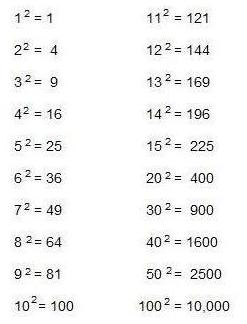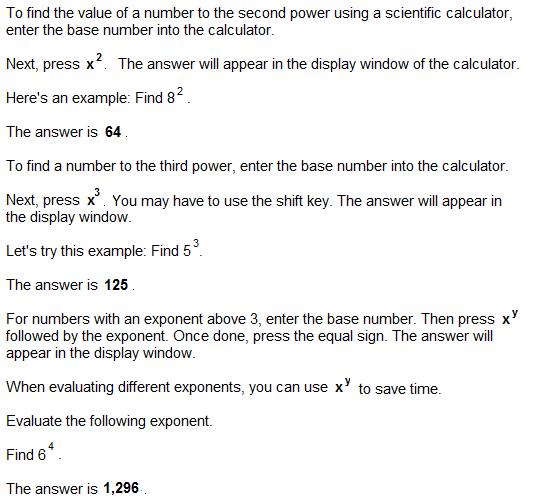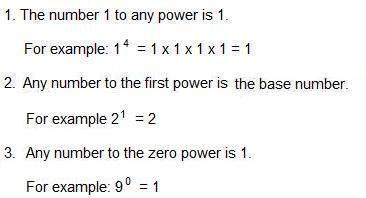



Some Helpful Tools
Math: Exponents - Tutorial
Just for Practice
You can write 81,574 using powers of 10. This is called Scientific Notation. See the chart below.


Exponents - an Overview
Before you begin the operation of finding the square root of a number, it is important to know the perfect square of that number.
A perfect square is created when you multiply a number times itself.
Let's look at some examples.
In the example above, the five is the base and the two is the power or the exponent. The exponent tells how many times you will multiply the base times itself.
When the exponent is two, the base is squared.
The exponent may be a number other than two.
For example, if the exponent is three, then the base is cubed.
More on Exponents
Let's look at some more examples:
is read as: "four to the third power or four cubed."
is read as: "four to the fourth power."
is read as: "four to the fifth power."
Remember that the exponent may be any number.
Below are some more examples where the exponent is a number other than 2. We can evaluate these exponents, which is to say that we can find their mathematical value.
Evaluate an Exponent Using a Calculator
A Few Rules to Consider
Below is a chart showing perfect squares. Remember, when you multiply a number times itself, you create a perfect square.
Some Perfect Squares
For example:
We will take a closer look at multiplying using powers of 10 in the Scientific Notation Tutorial.



This section will cover the fundamentals and rules for evaluating exponents.